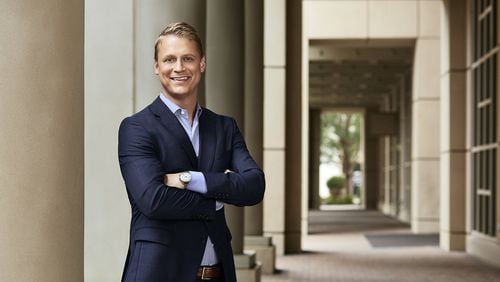The Dow Jones has already blown through several new round numbers in 2018, and investors are right to feel on edge. Folks are likely wondering whether this run-up will continue, and most importantly, where we are headed next.
That’s been the central question for investors ever since, well, ever since the beginning of time. And ever since that question was first asked, there’s been no shortage of answers from experts of every stripe. Today is no different.
Like most Americans, I’m accustomed to seeing politically oriented conversations on TV in which the two sides take completely opposing views. But on most financial networks (think CNBC), guests typically stay respectful of each other and couch their language carefully, even when they are in stark disagreement. This dynamic often creates the appearance that bulls and bears are saying pretty much the same thing.
That’s why a recent interview between two heavyweight Wall Street strategists caught my attention. It featured Thomas Lee, former chief equity strategist from JP Morgan, and Mike Wilson, Chief U.S. Equity Strategist of Morgan Stanley. Both are highly educated and respected, both have over 25 years on Wall Street, and both were in full disagreement about what will happen next in markets.
IN OTHER BUSINESS NEWS | Federal tax bill could mean massive state tax hike for Georgians
It was refreshing to see a good old-fashioned disagreement. But at the end of the day, it made for muddied conclusions on where the market stands. No wonder most Main Street investors are completely confused!
Here’s what Lee and Wilson said:
Lee explained that he and his company believe that we are only in the fourth or fifth inning of the current economic cycle, and that the market will continue onward and upward for another 11 years. He sees the S&P 500 (currently around 2,800) landing somewhere between 6,000 and 15,000.
Wilson, on the other hand, told CNBC that we are nearing the end of the business cycle and markets are now near their peak.
Essentially, they disagreed wholeheartedly on the short-term forecast of the market. While neither elaborated on what time frame constitutes short term, they were speaking about our current economic cycle, and it’s safe to say a short-term analysis would be somewhere between one and three years.
Where they did agree was on the topic of long-term growth. We’ll delve into that in just a bit.
Now, before we call either of these fellows crazy, let’s explore the basis for their predictions.
Lee argues that we’re only at the halfway point in the market’s current growth cycle. He believes we’ll see the S&P 500 continue to substantially grow — to between 6,000 and 15,000 over the next 11 years.
He contends we are “midcycle” based on housing starts and other benchmarks, such as automobile sales. Lee also thinks that as bonds face more headwinds, baby boomers will increase their allocations to U.S. equities, providing further tailwinds for the stock market. Based on all of this, Lee believes the equity market cycle won’t peak until 2029.
While this may sound unlikely at first blush, it is mathematically viable. To go from 2,800 to 6,000 in 11 years doesn’t require a fantastic annual percentage rate of return. With 7.17 percent over 11 years, we could get to 6,000. To reach 15,000, we’d need a more robust rate of an average of 16.5 percent.
That may still seem like a stretch, but Lee’s predictions deserve serious consideration. He was one of the few Wall Streeters to foresee that Donald Trump would win the election and that Trump’s victory would prompt stocks to rally, not slump.
Now let’s turn our attention to Wilson’s prediction. In the short run, he says it’s clear that we are in the very late stages of an economic expansion. His argument rests largely on the fact that the current unemployment rate at a low 4.1 percent leaves little labor remaining to accelerate economic growth. So, according to Wilson, to say that we have several more years left in our current market expansion is “misplaced.”
Understandably, investors might worry about what this seeming lack of clarity about the future means for their investments. So, let’s try to decode this debate.
First, note that Lee and Wilson actually agree on the long-term outlook. They use the word “secular” to refer to the long run, and “cyclical” to refer to the short run. In essence, a secular outlook relates to what’s going to happen if you take your lens and zoom out, taking a look at a longer span of time — usually 10 to 20 years. A cyclical outlook is the opposite; referring to the next one to three years.
Wilson said during the interview that he sees a short-term drag coming followed by a long-term rebound; whereas Lee believes the future is full of growth for the next 11 years, with no significant setbacks on the horizon.
Their outlook on the secular (long-term) view is the same; what’s different is how they each believe we will get there. From Lee’s perspective, we’ve got smooth sailing until 2029. Wilson disagrees and sees choppy seas ahead for investors before we finally get back on track.
Quite frankly, both Lee and Wilson have solid arguments to support their differing positions on the short term. But I tend to agree more with Lee’s predictions.
Wilson relies heavily on the unemployment rate as a determining metric. However, I believe wage inflation is a better economic predictor than the unemployment rate itself. When wage inflation gets close to 4.0 percent (due to a tight labor market), economic expansion almost always ends. This is because higher wages squeeze corporate profits and earnings, causing companies to lay off workers, often increasing the unemployment rate and, ultimately, a recession. Wage inflation is currently at 2.5 percent — nowhere near the dreaded 4.0 percent. So, I think this part of Wilson’s argument is ultimately misguided.
On the flipside, Lee makes several vital points and provides evidence for a current midcycle state — meaning there’s still time for expansion. Another critical ingredient is that the economic benefits from tax reform are just getting started.
As this debate shows, only one thing is certain, and that’s uncertainty. Ultimately, only time will tell whether Lee or Wilson is correct.
In the meantime, investors should stay focused on the long term. Don’t let short-term debates like this prompt you to hop in and out of the market. What really matters in investing is being prepared to weather any storm. Staying in the market for the long haul is the best way to build a healthy portfolio.
Just ask Warren Buffett, who loves to remind investors that for 200 years, it’s been a mistake to bet against the U.S. and its ever-upward economy. As our population grows and productivity and innovation improve, we (and the markets) fare better and better. The pie gets bigger and bigger.
Last year, I did a series called “Head West,” a reference to the European explorers. This group was fearless but not precise; they ended up all over North, South and Central America, but the journey paid off, all because their general direction over the long run was correct. Remember that their payoff only came after months of staying the course, regardless of dangerous storms, horrible food, and dreadful living conditions.
I still believe the general direction for the markets is one of expansion. And if that’s the case, we can just forget about the short-term spat arguments we see on TV, even if they come from the financial big dogs. None of us can predict the next week, month or year, but we can hold on to our good sense of the larger journey. And from where I stand, that’s continued expansion for a very long time here in the U.S., and in many economies around the world.
Wes Moss has been the host of “Money Matters” on News 95.5 and AM 750 WSB in Atlanta for more than seven years now, and he does a live show from 9-11 a.m. Sundays. He is the chief investment strategist for Atlanta-based Capital Investment Advisors. For more information, go to wesmoss.com.
DISCLOSURE
This information is provided to you as a resource for informational purposes only. It is being presented without consideration of the investment objectives, risk tolerance or financial circumstances of any specific investor and might not be suitable for all investors. Past performance is not indicative of future results. Investing involves risk including the possible loss of principal. This information is not intended to, and should not, form a primary basis for any investment decision that you may make. Always consult your own legal, tax or investment advisor before making any investment/tax/estate/financial planning considerations or decisions.
IN OTHER BUSINESS NEWS:
About the Author






